 W
WScottish Gaelic (Scottish Gaelic: Gàidhlig [ˈkaːlɪkʲ] , also known as Scots Gaelic and Gaelic, is a Goidelic language native to the Gaels of Scotland. As a Goidelic language, Scottish Gaelic, as well as both Irish and Manx, developed out of Old Irish. It became a distinct spoken language sometime in the 13th century in the Middle Irish period, although a common literary language was shared by Gaels in both Ireland and Scotland down to the 16th century. Most of modern Scotland was once Gaelic-speaking, as evidenced especially by Gaelic-language place names.
 W
WAn Comunn Gàidhealach, commonly known as An Comunn, is a Scottish organisation that supports and promotes the Scottish Gaelic language and Scottish Gaelic culture and history at local, national and international levels. The society is closely associated with the Royal National Mòd. The symbol used for An Comunn Gàidhealach is the Irish Sunburst flag at the top also a symbol associated in Irish mythology and the Celtic harp on the bottom right.
 W
WOral tradition, or oral lore, is a form of human communication wherein knowledge, art, ideas and cultural material is received, preserved, and transmitted orally from one generation to another. The transmission is through speech or song and may include folktales, ballads, chants, prose or verses. In this way, it is possible for a society to transmit oral history, oral literature, oral law and other knowledge across generations without a writing system, or in parallel to a writing system. Religions such as Buddhism, Hinduism, Catholicism, and Jainism, for example, have used an oral tradition, in parallel to a writing system, to transmit their canonical scriptures, rituals, hymns and mythologies from one generation to the next.
 W
WThe Book of Deer is a 10th-century Latin Gospel Book with early 12th-century additions in Latin, Old Irish and Scottish Gaelic. It is noted for containing the earliest surviving Gaelic writing from Scotland.
 W
WBòrd na Gàidhlig is the executive non-departmental public body of the Scottish Government with responsibility for Gaelic. It was established in 2005 and is based in Inverness.
 W
WJohn Francis Campbell, also known as Young John of Islay was a Scottish author and scholar who specialised in Celtic studies, considered an authority on the subject.
 W
WAlexander Carmichael was a Scottish exciseman, folklorist, antiquarian, and author. Between 1860 and his death Carmichael collected a vast amount of folklore, local traditions, natural history observations, antiquarian data, and material objects from people throughout the Scottish Highlands, particularly in the southern Outer Hebrides where he lived, worked, and brought up his family between 1864 and 1882. Alexander Carmichael is best known today for Carmina Gadelica, an influential but controversial compendium of edited Highland lore and literature published in six volumes between 1900 and 1971.
 W
WClì Gàidhlig, founded in 1984 as Comann an Luchd-Ionnsachaidh, is an organisation based in Inverness which seeks to support learners of the Scottish Gaelic language and has campaigned actively to promote the language.
 W
WThe Columba Project, formerly known as the Columba Initiative is a program for Gaelic speakers in Scotland and Ireland to meet each other more often, and in so doing to learn more of the language, heritage and lifestyles of one another. It was named after Colm Cille, whose monasteries shaped and spanned the Gaelic world of Ireland and Scotland.
 W
WAlthough Irish and Scottish Gaelic are closely related as Goidelic Celtic languages, they are different in many ways. While most dialects are not immediately mutually comprehensible, speakers of the two languages can rapidly develop mutual intelligibility.
 W
WComunn na Gàidhlig, abbreviated to "CnaG", is an organisation which seeks to promote Scottish Gaelic language and culture.
 W
WFather Henry Cyril Dieckhoff (1869-1950) was a Russian Catholic priest and linguist. He was born in Moscow, the son of a Lutheran preacher, but spent much of his youth in Germany, as his mother was Catholic and unable to continue living in Russia. He studied in Berlin and was given Holy Orders without permission from the Russian authorities and therefore first fled to England and then Scotland, where he was welcomed as a brother at the Fort Augustus Abbey in 1891. He gained priesthood six years laters in 1897.
 W
WJoy Dunlop is a Scottish broadcaster, singer, step dancer and educator from the village of Connel in Argyll, who now lives in Glasgow, Scotland. Singing predominantly in Scottish Gaelic, she performs folk music, song and dance in a contemporary style rooted in the tradition. She is a weather presenter for BBC Scotland and BBC ALBA.
 W
WEdward Dwelly (1864–1939) was an English lexicographer and genealogist. He created the authoritative dictionary of Scottish Gaelic, and his work has had an influence on Irish Gaelic lexicography. He also practised as a professional genealogist and published transcripts of many original documents relating to Somerset.
 W
WEarly Modern Irish represented a transition between Middle Irish and Modern Irish. Its literary form, Classical Gaelic, was used in Ireland and Scotland from the 13th to the 18th century.
 W
WThe Gaelic Language (Scotland) Act 2005 is an Act of the Scottish Parliament passed in 2005. It was the first piece of legislation dedicated to the Scottish Gaelic language and was seen as the first hesitant step by the Scottish Executive to provide a legislative framework for the use of Gaelic by Scottish Public sector authorities. It created a Gaelic Language Board, but created no general rights of citizens or obligations on statutory authorities to actually use the language. This is in contrast to the UK parliament's legislation for the Welsh Language which authorises the use of Welsh in public administration. There has been no significant development of the Gaelic Language (Scotland) Act 2005 between 2005 and 2021.
 W
WIn the Gaelic-speaking parts of Scotland, the use of the Gaelic language on road signs instead of, or more often alongside, English is now common, but has been a controversial issue.
 W
WThe Gàidhealtachd usually refers to the Highlands and Islands of Scotland and especially the Scottish Gaelic-speaking culture of the area. The corresponding Irish word Gaeltacht refers strictly to Irish-speaking areas.
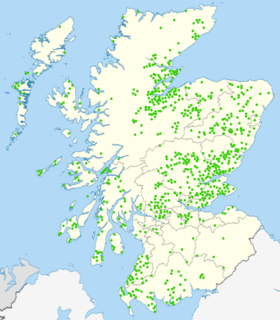 W
WScottish Gaelic, is a Celtic language native to Scotland. A member of the Goidelic branch of the Celtic languages, Scottish Gaelic, like Modern Irish and Manx, developed out of Middle Irish. Most of modern Scotland was once Gaelic-speaking, as evidenced especially by Gaelic-language placenames.
 W
WNils Magnus Holmer (1904–1994) was a Swedish linguist born in Gothenburg, Sweden.
 W
WThe Local Government (Scotland) Act 1997 enables local councils in Scotland to rename the areas for which they are responsible with Gaelic names. It enables them also to revert to names in English. The act was passed by the Parliament of the United Kingdom.
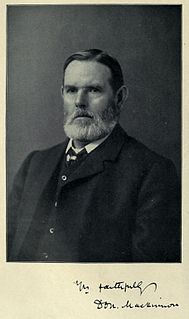 W
WDonald MacKinnon (1839–1914), born on Colonsay, an island in the Scottish Inner Hebrides, was a Celtic scholar, the first elected Professor of Celtic languages, literature, history and antiquities at Edinburgh University, a chair he occupied from 1882 to the year of his death in 1914. He is known particularly for his edition and translation of the so-called Glenmasan manuscript, and also catalogued the manuscripts in the Advocates Library collection.
Alistair Stuart MacLean was a 20th-century Scottish novelist who wrote popular thrillers and adventure stories. His works include The Guns of Navarone, Ice Station Zebra and Where Eagles Dare; all three were made into popular films. He also published two novels under the pseudonym Ian Stuart. His books are estimated to have sold over 150 million copies, making him one of the best-selling fiction authors of all time.
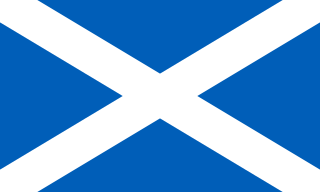 W
WA mòd is a festival of Scottish Gaelic song, arts and culture. Historically, the Gaelic word mòd, which came from Old Norse mót, refers to any kind of assembly. There are both local mòds, and an annual national mòd, the Royal National Mòd. Mòds are run under the auspices of An Comunn Gàidhealach. The term comes from a Gaelic word for a parliament or congress in common use during the Lordship of the Isles.
 W
WThere is no standard variety of Scottish Gaelic; although statements below are about all or most dialects, the north-western dialects are discussed more than others as they represent the majority of speakers.
 W
WThe Royal National Mòd is a peripatetic festival held annually in Scotland. It is the largest of several major Scottish Mòds, and focuses on Scottish Gaelic literature, song, arts and culture. It is often referred to simply as the Mòd.
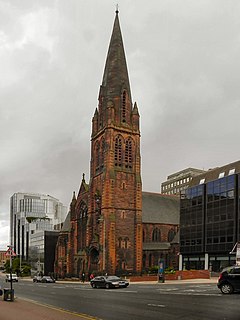 W
WSt Columba's Church is a Church of Scotland Parish church that serves a Gaelic congregation in Glasgow.
 W
WThe Scottish Gaelic Awards (Scottish Gaelic: Duaisean Gàidhlig na h-Alba [ˈt̪uəʃən ˈkaːlɪkʲ nə ˈhal̪ˠapə] to people who have made significant contributions to the Gaelic language. They are organised by Bòrd na Gàidhlig in partnership with Media Scotland and also sponsored by Education Scotland and Highlands and Islands Enterprise with support from the Western Isles Council.
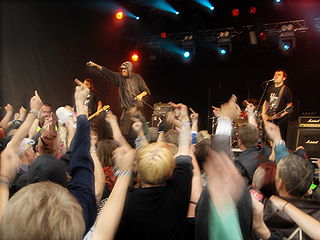 W
WScottish Gaelic punk is a subgenre of punk rock in which bands sing some or all of their music in Scottish Gaelic. The Gaelic punk scene is, in part, an affirmation of the value of minority languages and cultures. Gaelic punk bands express political views, particularly those related to anarchism and environmentalism.
 W
WThe Scottish Gaelic Wikipedia is Scottish Gaelic version of Wikipedia. As of 8 November 2021, it contains 15,539 articles and has 24,451 editors.
 W
WThe sgian-dubh is a small, single-edged knife worn as part of traditional Scottish Highland dress along with the kilt. Originally used for eating and preparing fruit, meat, and cutting bread and cheese, as well as serving for other more general day-to-day uses such as cutting material and protection, it is now worn as part of traditional Scottish dress tucked into the top of the kilt hose with only the upper portion of the hilt visible. The sgian-dubh is normally worn on the same side as the dominant hand.
 W
WSròn is the Scottish Gaelic word for nose and is the name of some hills in the Scottish Highlands. Before the abolition of the acute accent in Scottish Gaelic, it was sometimes spelt as srón.
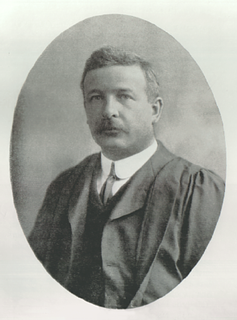 W
WProf William John Watson FRSE LLD was a toponymist, one of the greatest Scottish scholars of the 20th century, and was the first scholar to place the study of Scottish place names on a firm linguistic basis.
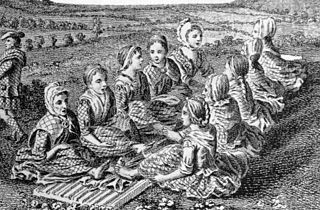 W
WWaulking songs are Scottish folk songs, traditionally sung in the Gaelic language by women while fulling (waulking) cloth. This practice involved a group of women rhythmically beating newly woven tweed or tartan cloth against a table or similar surface to lightly felt it and shrink it to better repel water. Simple, beat-driven songs were used to accompany the work.